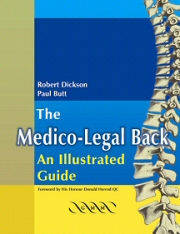7 - Miscellaneous Spinal Conditions
Published online by Cambridge University Press: 10 December 2009
Summary
INTRODUCTION
This short section, while not being so directly relevant to medico-legal matters, completes the clinical review of spine pathologies, which the spinal surgeon may be asked to address and indicates the wide variety of pathological conditions, which make up the clinical portfolio of the spinal surgeon. In addition, it gives the flavour of how far spinal surgery has come over the past two or three decades.
The great majority of low-back problems are mechanical in origin and, therefore, the patient is going to be less symptomatic, when resting than when active. Night pain is not a feature of degenerative conditions but is the classical symptom of bone destruction. Therefore, it is important when taking a history from a back pain patient to ask specifically about night pain as this is a red flag warning for a worrying pathological process, such as tumour or infection. Being woken up several times and often having to pace the room at night in an attempt to obtain relief is the classical symptom of tumour (Fig. 7.1), whereas back pain, temperature and tenderness are the clinical triad diagnostic of infection. Indeed only infection and fresh injury produce spinal tenderness. Then many low-back conditions are associated with a degree of stiffness in the morning, which tends to wear off after a few minutes of being up and about.
- Type
- Chapter
- Information
- The Medico-Legal Back: An Illustrated Guide , pp. 143 - 164Publisher: Cambridge University PressPrint publication year: 2003



